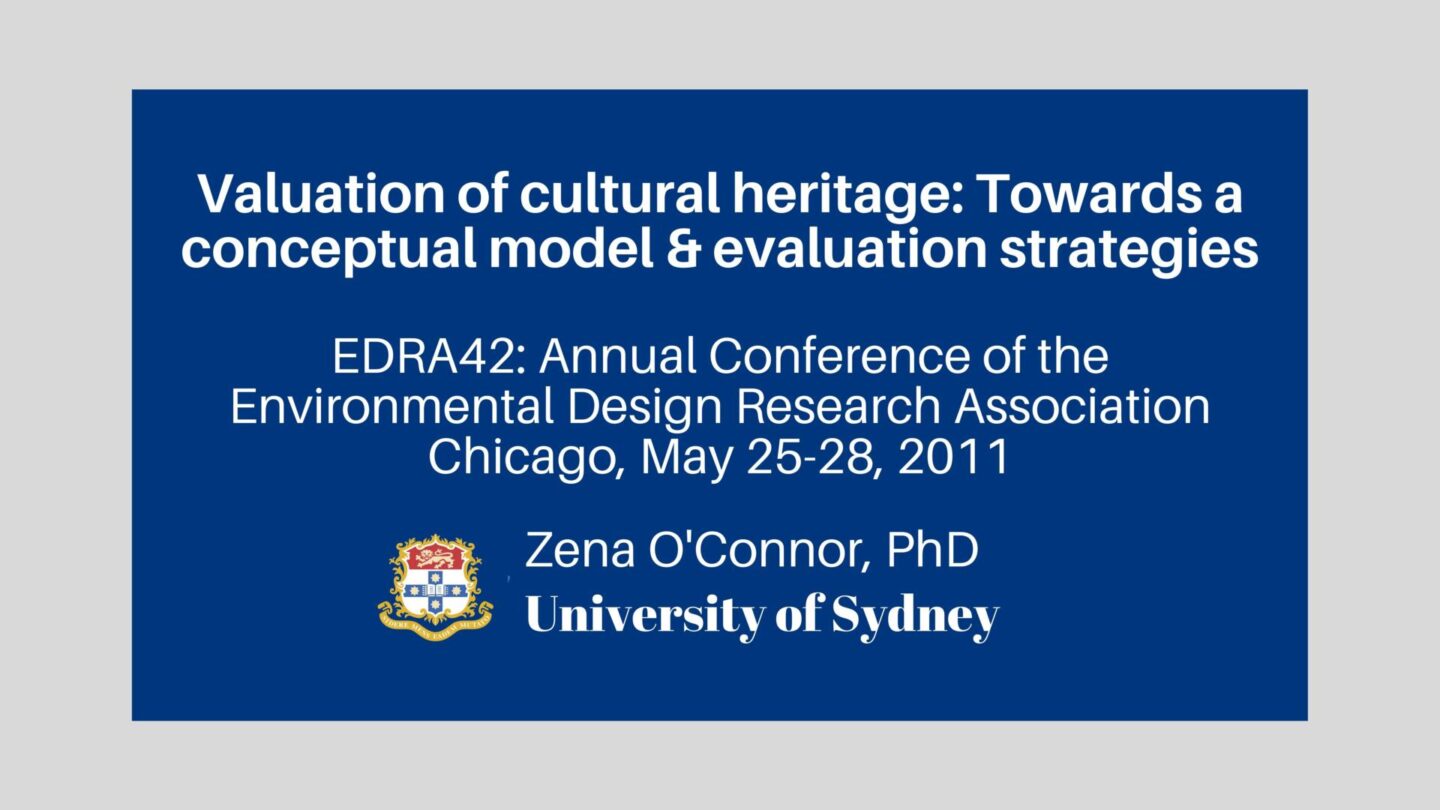
This peer-reviewed paper represented the outcome from a project conducted under the aegis of Professor David Throsby, Faculty of Economics, Macquarie University. I had the opportunity to present the paper at the EDRA conference in Chicago, which was held at the historic Palmer House Hilton.
Abstract – Places of cultural significance bring a range of benefits for the wider community, as well as shared responsibilities and opportunities for public participation. As such, places of cultural significance represent a community’s cultural capital. However, can cultural capital be measured or quantified? The benefits of applying a valuation process to cultural heritage is an important step beyond identifying places of cultural significance, as it provides a basis for decision-making in regard to short and long term conservation and maintenance strategies. To arrive at a point where valuation may proceed requires identifying relevant value factors followed by a determination of the means by which to assess and measure these value factors in order to achieve valuation and comparative examination. However, the valuation of cultural heritage may also be influenced by the impact of time as well as contextual and sustainability issues; and the process of valuation may also be complicated by a diversity of culturally based values and competing intentions. Given the complexity of these issues, it is important that whatever valuation process is devised, it must be fair, balanced, and transparent. This paper proposes a conceptual model for valuation of cultural heritage as a starting point for further discussion. In addition, a range of potential evaluation strategies
including assessment and measurement methods are proposed, along with recommended group participants and likely outcomes.
The full paper was published in the conference proceedings and it can be accessed via this link.